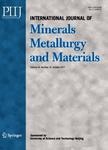Fabrication of W/Cu and Mo/Cu FGM as Plasma-facing Materials
Fabrication of W/Cu and Mo/Cu FGM as Plasma-facing Materials作者机构:Laboratory of Special Ceramics and Powder Metallurgy University of Science and Technology Beijing Beijing 100083 China Southwest Institute of Nuclear Physics Chengdu 610041 China
出 版 物:《International Journal of Minerals,Metallurgy and Materials》 (矿物冶金与材料学报(英文版))
年 卷 期:2000年第14卷第2期
页 面:122-125页
核心收录:
学科分类:08[工学] 0806[工学-冶金工程] 080601[工学-冶金物理化学]
主 题:FGM plasma-facing material W/Cu and Mo/Cu alloy
摘 要:W/Cu Functionally Graded Materials (FGM) was designed not only for reducing the thermal stress caused by the mismatch of thermal expansion coefficients, but also for combining the features of W, Mo - high plasma-erosion resistance and the advantages of Cu - high heat conductivity and ductility. Four different fabrication processes for W/Cu or Mo/Cu, including hot-pressing, Cu infiltration of sintered porosity-graded W skeleton, spark plasma sintering and plasma spraying, were investigated and compared. It was foundthat the hot-pressing process is difficult to keep the designed composition gradient, while the other three processes are successful in making W/Cu or Mo/Cu FGM. Meanwhile, microstructures and composition gradients are analyzed with SEM and EDAX.



